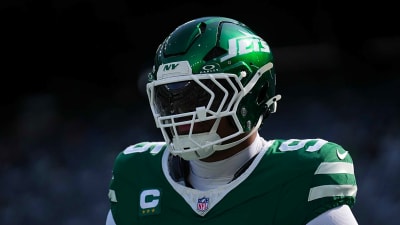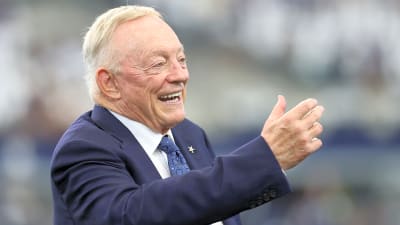
Breaking down Jimmy Butler's trade value
After months of toing and froing, we can now be certain that the Miami Heat will trade Jimmy Butler. Probably. Maybe.
Butler clearly wants out, and, after much posturing, Heat president Pat Riley is willing to move his malcontent star. Riley being Riley, he’ll want a swag of assets for Butler, and that’s where the waters become murky.
Butler is still a star who at his best can win a game or even a series on his own at either end of the floor. He’s a six-time All-Star with five All NBA’s and five All-Defensive honors in his pocket. He’s also a 35-year-old in his 14th season, some of those spent with the famously load management-averse Tom Thibodeau as his coach. The tread on those tires is wearing. Butler is clearly on the decline.
Even in a down year, Butler is posting solid numbers: 17.6 points per game on .552/.375/.788 shooting, 5.5 rebounds, 4.7 assists and 1.2 steals. Butler is not a volume shooter from deep, but he’s no liability, either. And his lack of threes is balanced by a bully-ball style that sees hm live at the charity stripe.
Whilst no longer an All-Defense candidate, Butler is still very good at that end, able to lock down his mark when needed and still one of the best in the NBA at generating fast breaks from steals and deflections. He’s still, clearly, a top-30 player in today’s league.
Given Butler’s game is not predicated on blinding speed or leaping over tall buildings, it’s reasonable to expect that his game could age well. His foul-drawing and playmaking are skills that generally get better with age. Don’t be surprised to see Butler attacking out of the mid-post more over the next few years.
The elephant in the room, though, was referenced by Riley at the end of last season, when he essentially called out Butler for not being available enough. In five full seasons in Miami, Butler has played between 52 and 64 regular-season games. (In fairness, he was on course to play 74 games in the shortened 2020 campaign.) His current suspension notwithstanding, this season, Butler is on track to make less than 50 appearances.
Availability, as the saying goes, is the best ability. At his age and with his tenure, it’s perfectly fair for any potential suiters to ask themselves just how much Butler would be in uniform as he moves into his late 30’s.
That bleeds into the next issue.
Butler is in the final year of his deal, earning a shade under $49M this season. (He has a $52.4M player option for next season that he intends to opt out of.) Much of the current discourse between player and club started when the Het refused to give Butler the max extension he sought this past off-season.
Negotiating Butler’s next deal is complicated, to say the least. How much will a team be willing to surrender to acquire Butler, only to see him either overpaid or walking away?
Complicating matters is the punitive nature of the new Collective Bargaining Agreement. Second-apron teams — Miami, New York, Milwaukee, Boston, Minnesota and Phoenix — trading with each other is exceptionally difficult, in effect ruling out the Suns, Butler’s preferred destination.
The Lakers and Nuggets could persuade themselves to get into the Butler business, but he doesn’t exactly fit cleanly into their ecosystems on offense. Golden State has apparently backed out of trade talks (though there could be some posturing going on), and the Rockets have nixed any thought of a homecoming for the Houston native.
Suddenly, the options for Riley and Butler are looking awfully scarce.
Whether the Heat are looking for a return of win-now players, young talent, draft picks or some combination of the three, it stands to reason that if a suitable trade was out there, the Heat would have already pulled the trigger.
Butler could take a team over the top, but a shrinking market, a not-always-clean offensive fit, a looming extension and Butler’s well-documented pernickety nature make any trade fraught with danger, thus sharply reducing his trade value.
More must-reads:
- Coming off faltering finish, Blazers await Heat's visit
- Heat forced to rely on second-year forward with Jimmy Butler out
- The 'NBA steals-per-game leaders' quiz
Breaking News
Trending News
Customize Your Newsletter
 +
+
Get the latest news and rumors, customized to your favorite sports and teams. Emailed daily. Always free!








